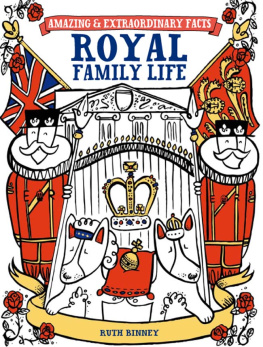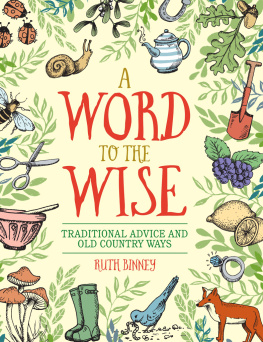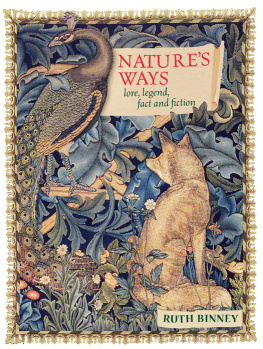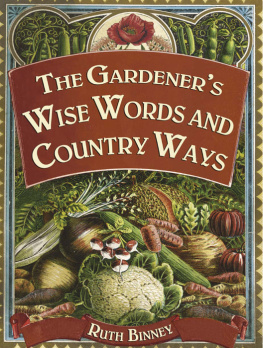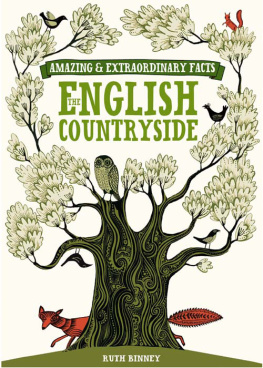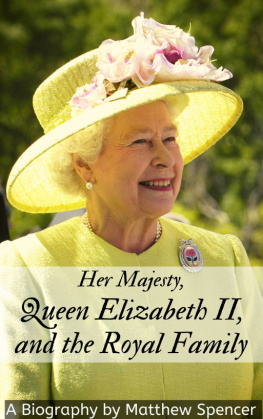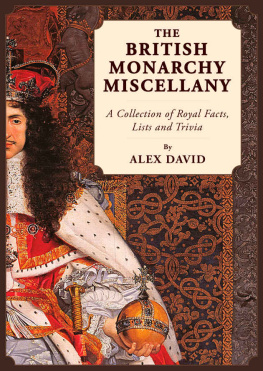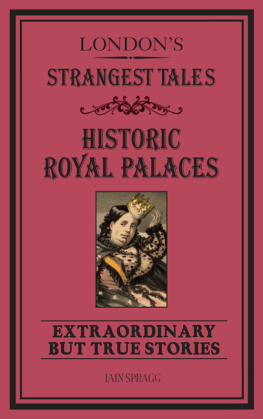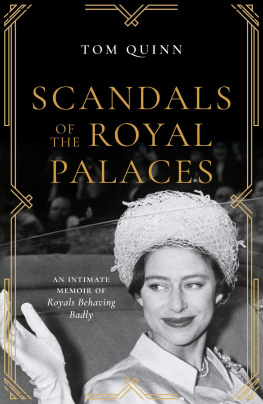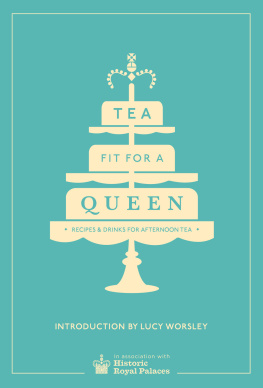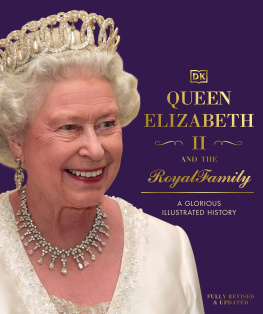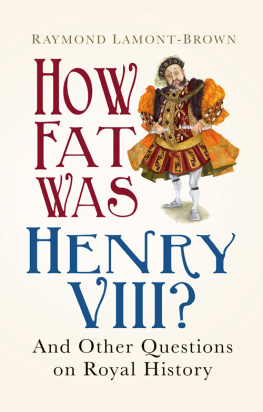AMAZING & EXTRAORDINARY FACTS
ROYAL
FAMILY LIFE
RUTH BINNEY

INTRODUCTION
Curiosity about the lives of the members of the Royal Family is nothing new. People of every age have strived to discover the intimate details of Britains rulers and their next of kin. Today, media attention is ever more intense, stimulated by events such as the death of Princess Diana, the wedding of Prince William and Kate Middleton, and the Diamond Jubilee of Elizabeth II, the Queen who, even in her mid 80s, is still tirelessly engaged in a myriad of royal duties, and mindful of the importance of family.
In her message of 6 February 2012, the anniversary of her succession, the Queen summed this up: In this special year, as I dedicate myself anew to your service, I hope that we will all be reminded of the power of togetherness and the convening strength of family, friendship and neighbourliness, examples of which I have been fortunate to see throughout my reign and which my family and I look forward to seeing in many forms as we travel throughout the United Kingdom and the wider Commonwealth.
In delving into the more personal lives of the Royal Family past and present whilst writing this book, fascinating insights have emerged, in themes that have repeated themselves generation after generation from difficult childhoods to fashion icons, from love matches (and disappointments) to divorces, and from unrehearsed coronations to assassination attempts and untimely deaths. Even bedroom intruders and interference from the press are nothing new, but there are also some unique events, notably the abdication of Edward VIII in 1936 and the madness of George III.
The development of the royal traditions we now take for granted have also become clear, from appearances on the Buckingham Palace balcony to summer holidays at Balmoral and the annual Christmas broadcast. Royal leisure pursuits and interests, the book reveals, have a long history particularly the love of horses and dogs, country sports and enjoyment of the arts. And as each story in this book unfolds, Royal Family characters not only come into a sharp focus as individuals, but their stories are embellished by their passions and hatreds, trials and tribulations, successes and disasters and in the domestic details of their homes and gardens.
On 2 June 1953, the day the Queen was crowned, I was lucky enough to see the coronation procession live in Londons Piccadilly Circus. It is a memory that will never fade. I have also had the honour to be introduced to the Queen Mother on two occasions, separated by over 35 years. Such events inevitably stimulated an increased interest in the most amazing and extraordinary facts about Royal Family life, which I have tried to communicate in this book. In its making my thanks are due particularly to Janet Taylor who has helped me with the research, and to the team at David & Charles for their guidance in its creation.
God Save the Queen!
Ruth Binney
West Stafford, Dorset, February 2012
www.ruthbinney.com
Accomplished Prince
Henry VIIIs rounded education
T he scholar Erasmus described him as a lively mentality which reached for the stars and able beyond measure to bring to perfection whichever task he undertook. From a very early age Prince Henry proved to his first tutor, his maternal grandmother Margaret Beaufort, that he had an eye for detail and a prodigious memory. His first lessons in reading and writing were accomplished using parchment and a horn book, a small wooden board with a handle covered in parchment and topped with a thin layer of transparent horn on which was written the alphabet and the Lords Prayer.
Even at the age of five, the young Prince Henry was receiving the best possible education of his day, being taught Greek, French, Spanish and Latin as well as literature and rhetoric, the latter by John Skelton, the Poet Laureate. Religious studies according to the Roman Catholic doctrine which was to have such an impact on his later life were included, as well as astronomy, cartography and navigation. And Henry was a fine musician and sportsman indeed the perfect all rounder. If he was naughty there was no immediate problem for the Prince: his whipping boy would be punished in his stead. The boy Henrys closest friends and playmates were his cousins William Compton and Charles Brandon and a young nobleman named Henry Norris. He had little to do with his brother Arthur, the delicate heir apparent, who had been sent to Ludlow Castle in Shropshire when Henry was only a year old.

Henry VIII
The Kings Favourite
The young Princess Victoria
S he called him Uncle King the gouty, swollen, ageing George IV and on an unforgettable day in her childhood Drina, the young Princess Victoria, was presented to him. Give me your little paw he said, and the young girl immediately shot out her hand before being placed upon the Kings knee to kiss his highly rouged cheek. To mark the event the Kings mistress, Lady Conyngham, pinned a miniature of the monarch onto Victorias dress and there followed all kinds of delights. A ride in the Kings phaeton and entertainment from Tyrolean dancers thrilled the Princess, and when asked what she would like the band to play she replied, to the monarchs delight, God Save the King.
In the schoolroom
By the age of four, Victoria was learning the alphabet but also revealing her tempers, the self-confessed storms that would never leave her. With her half-sister Fedore being 12 years older, it was a lonely life. For all her sternness, Victorias German governess Louise Lehzen managed to instil in her reluctant pupil a love of history often telling her stories while her hair was being brushed and fostered her talent in languages, but other subjects were much disliked. Lehzen also began Victorias famed collection of dolls, and together the pair dressed 132 puppets inspired by opera. Other lessons were in singing (excellent), piano (less good), dancing, and drawing which was to become a lifetime passion.

PRICKLY PUNISHMENT
To learn deportment Victoria would have a sprig of holly pinned onto her clothes just under her chin to keep it raised. As a result she called all bad days holly days.
Inseparable
In January 1833 the scheming Sir John Conroy, Comptroller of the household of Princess Victorias mother, the Duchess of Kent, presented the Duchess with a King Charles spaniel named Dash. This dog was to become Victorias constant companion, dressed in a scarlet jacket and blue trousers (she had now abandoned her dolls) and given Christmas gifts such as India rubber balls and holly-decorated gingerbread. When she first met Prince Albert, Victoria was happy to note that he played with and fussed over Dash.
The inscription on Dashs marble effigy at Adelaide Cottage near Windsor says it all:
Here lies
DASH
The favourite spaniel of Her Majesty Queen Victoria
In his 10th year
His attachment was without selfishness
His playfulness without malice
His fidelity without deceit
READER
If you would be beloved and die regretted
Profit by the example of

